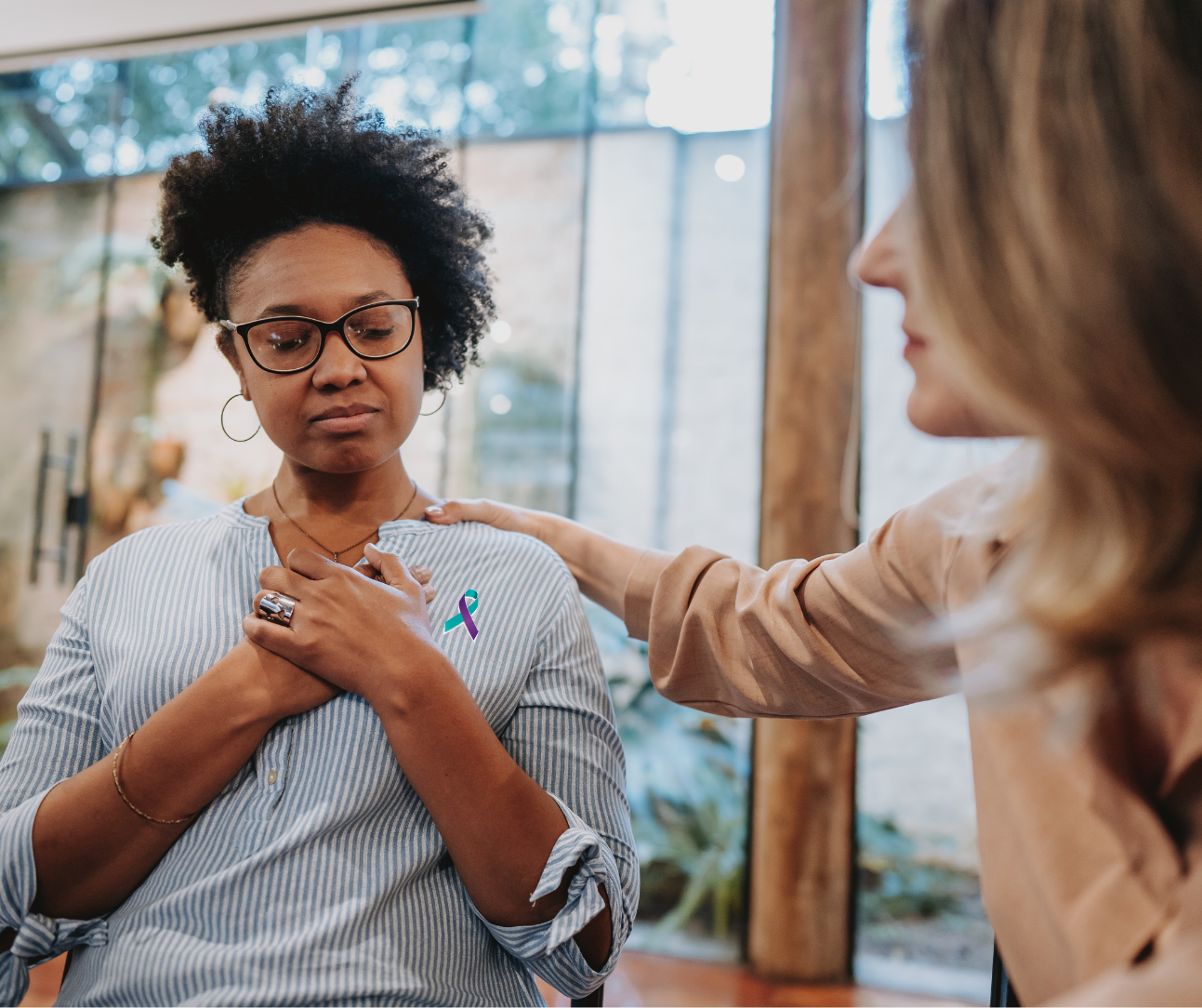What it Means to be ‘Here for You’

When it comes to preventing suicide, we know that connection is one of the strongest protectors. It’s our connections with others that give us purpose and focus. Any person experiencing loneliness or depression needs someone to be right there to listen to and support them. When we say, “Here for You,” we want everyone to know that there is someone here that cares for them, that they are loved and wanted every day and that we can all be “Here for You” each day, whether we are professionals in mental health or not.
Connection takes on many forms in life and understanding how each one can support us differently is important. Here are three different ways to be “Here for You”:
As an Individual:
- This may be the one we all think of. We can be “Here for You” as individuals every day. It can be as simple as: Ask how someone is – and mean it. If they respond with “not good,” then listen.
- Listening – knowing you care and are there to truly hear someone, not respond or “fix it” can go a long way to saving a life. Create meaningful connections by spending quality time with those around you.
- Reach out – someone may not be willing to reach out on their own, but you can call alongside with them and provide support as they get the help they needLearn more – if you want to be there for someone, we can help. Take a suicide prevention training like QPR or MHFA.
- Saying something like “thank you for sharing” or “I’m so grateful you feel you can talk to me and letting me be here for you” are wonderful ways to show empathy and appreciation, knowing sharing can be difficult.
- Remember, you don’t have to have all the answers. Just showing you care and are a safe space for those around you can save the life of someone you love.
As a community:
Community can mean many things:
- A group of friends, family, coworkers who provide support as individuals.
- A group of organizations who combine resources to create meaningful partnerships.
- A group someone is part of that provides meaning/support (church, sports, hobbies) – These groups bring individuals together through common interests, beliefs, or experiences and allow for deeper self-expression.
- Create collaborative suicide prevention partnerships – Suicide Prevention Coalition, AFSP Colorado, NAMI Colorado.
- Create postvention and support people with lived experience – Communicating loss with care, provide resources, honoring loved ones with events or activities.
As an organization:
- Provide training to people for suicide prevention – QPR/MHFA
- Reduce access to lethal means – Gun locks/safes and medication safes, reduce close access to bridges or rooftops, partner with firearm shops to identify signs of suicidal tendencies.
- Integrate suicide prevention into the culture of workplace – Create access to mental health resources like EAP, identify and address work-related stressors that affect an employee’s mental health, foster an environment where employees can talk freely about matters that impact them.
It’s always important to note that you do not have to be a professional or have all the answers to help, but simply being there can still be enough. According to Suicide Prevention Now, two-thirds of adults believe they don’t’ have enough knowledge to know if someone is considering suicide, but four out of five are open to learning more how they can do more for those in need. Being present and building connection is always the best start.
Now that you have a start, we encourage you to use this knowledge to define your own ways to be there for someone you love. Download our journal page here.
- Kiara’s Note – Blog
- Mental Health Matters – Blog
- Voices of Hope – Blog
- Humans of Jefferson Center
- Addiction & Substance Use
- Anxiety
- Child Mental Health
- Crisis and Trauma
- Depression
- Exercise
- Just The Facts
- LGBTQIA+ & Pride
- Medicaid
- Men’s Mental Health
- Parenting
- Recovery
- Senior and Older Adult
- Socializing
- Stigma
- Stress
- Suicide Prevention
- Support & Advocacy
- Teen’s Mental Health
- Treatment Options
- Women’s Mental Health